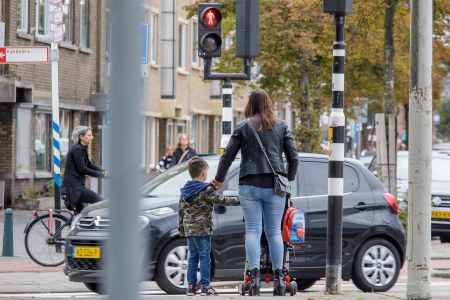Not much, and certainly not much methodologically sound, research has been done on the effects of traffic education. So, we do not know the effect of most traffic education programmes. The research that has been done concerns, for the most part, primary and secondary school programmes. This allows us to conclude that some traffic education projects can lead to (small) changes in behaviour and increased knowledge. In a few cases, however, traffic education can also lead to an undesired effect. For most traffic education programmes, the effect on crash involvement is unknown. Two types of traffic education for which a positive effect on crash risk was found are a general resilience training (see the question What is the effect of general resilience training?) and hazard perception training (see the question How useful is hazard perception as part of driver training and driving tests? In the SWOV fact sheet Driver training and driving tests).
Many educational programmes are not evaluated or are only evaluated at the process level. Studies that do look at effects are often too small in scale to draw conclusions. Also, many of the evaluation studies are methodologically inadequate. An older but large-scale meta-analysis [27] reviewed 674 evaluation studies, of which only 15 were found to meet methodological requirements. Often a proper control group was missing and allocation to the experimental group or the control group was not blind and random. However, proper evaluation of (traffic) education programmes is very important as it forms the (empirical) basis for further improvement (see the question How can traffic education be further improved?). In addition, proper evaluation is important since traffic education programmes differ from one another enormously. If a programme works for a specific target group, specific learning goals and a certain teaching method, this does not automatically imply that it will work equally well for another target group, other learning goals and another teaching method.
The effect of traffic education is almost never measured in terms of crashes or crash risk. This is also virtually impossible because crashes are ultimately very rare events. Effects of traffic education are generally measured in terms of behaviour, sometimes observed behaviour, often self-reported behaviour. In addition, knowledge and attitudes are also considered. It is not known to what extent these effect measurements are good predictors of crash risk.
The aforementioned meta-analysis [27] concluded that some programmes teaching children how to cross the road safely may improve behaviour. They may also improve knowledge, but all in all the authors concluded that (pg. 4): "There is no reliable evidence supporting the effectiveness of pedestrian education for preventing injuries in children and inconsistent evidence that it might improve their behaviour, attitudes, and knowledge."
The results of a later Dutch study reviewing a total of eleven different education programmes for primary and secondary schools [28] [29], confirm this general conclusion. They showed that some reviewed projects had, at most, a small effect on self-reported behaviour, but could not determine whether this was associated with actually safer behaviour or crashes.
However, traffic education is also not a matter of ‘doesn't help, doesn't hurt’; projects that are not properly designed may also have an adverse effect [30] [31].
The lack of unequivocal evidence for the effectiveness of traffic education does not mean that it should be abolished. Even if traffic education apparently does not immediately lead or hardly leads to safer behaviour, everyone will at least need to know the most important traffic rules and have some basic skills in order to participate in traffic safely.
